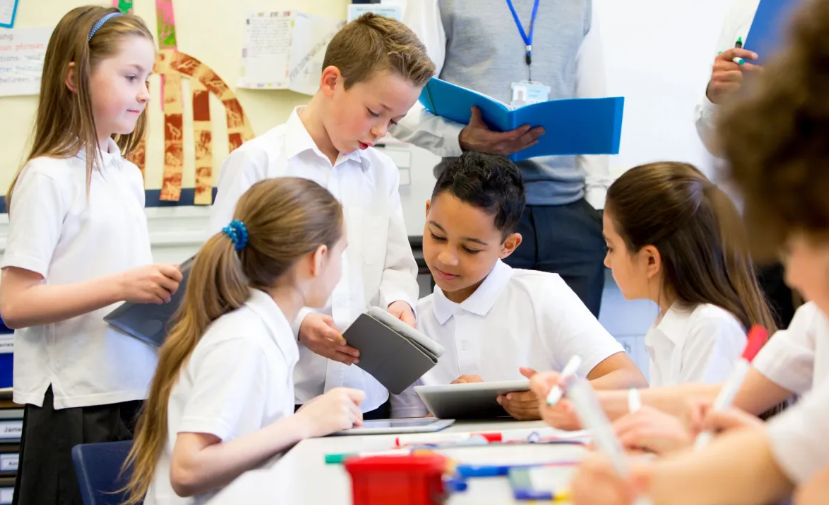In the fast-paced world of education, keeping students engaged in the classroom is a continuous challenge for teachers. With various distractions and the growing need for interactive and student-centered learning, educators are constantly on the lookout for teaching hacks that can help create engaging classroom experiences. In this article, we’ll explore some innovative and practical teaching hacks to foster an environment where students are not just passive participants but enthusiastic learners.
Gamify Learning: Make Education Fun
Gamification has taken the education world by storm. Incorporating game elements into your lessons can turn dull subjects into exciting adventures. Whether you use educational apps, quizzes, or physical games, gamification motivates students, making learning more engaging and enjoyable.
The Power of Technology: Use Educational Apps
Utilize educational apps and digital platforms that cater to various learning styles. Apps like Kahoot, Quizlet, and Duolingo can transform your teaching methods and create interactive and dynamic lessons that resonate with tech-savvy students.
Flipped Classroom Model: Reverse the Traditional Learning
The flipped classroom model involves students learning course material at home through videos or online resources and using class time for active discussions, problem-solving, and clarifications. This approach keeps students more engaged and encourages critical thinking.
Hands-On Learning: Encourage Exploration
Learning by doing is a powerful teaching hack. Create opportunities for students to explore and experiment through hands-on projects, experiments, and interactive simulations. This approach not only deepens understanding but also sparks curiosity.
Real-World Applications: Connect Learning to Life
Relate classroom content to real-life situations and experiences. By doing so, you demonstrate the practical value of what they’re learning, making it more relevant and engaging. Students become more eager to apply their knowledge in real-world contexts.
Peer Teaching: Learn from Each Other
Encourage peer teaching, where students take turns explaining concepts to one another. This not only reinforces their understanding but also fosters a collaborative environment where students actively participate in each other’s learning process.
Create a Comfortable Environment: Safe Spaces for Learning
An inviting and comfortable classroom can significantly impact students’ engagement. Ensure a safe and positive atmosphere, with flexible seating arrangements, adequate lighting, and decor that stimulates curiosity.
Personalize Learning: Tailor Content to Individual Interests
Recognize that each student is unique. Allow them to choose projects or topics of interest within a curriculum, giving them a sense of ownership over their learning. Thus , this personalization can boost engagement and motivation.
Storytelling: Make Lessons Memorable
Weaving stories into your teaching can captivate students’ attention and help them remember the content better. Stories make abstract concepts relatable and interesting, leaving a lasting impact.
Encourage Questions: Foster Curiosity
Promote a culture of inquiry by encouraging students to ask questions. Welcome their queries, and use them as opportunities for meaningful discussions. This approach keeps their minds active and inquisitive.
Interactive Assessments: Engage with Feedback
Instead of traditional exams, opt for interactive assessments. Regularly provide feedback, engage in one-on-one discussions, and use a variety of assessment methods to help students see their progress and stay motivated.

Visual Learning Aids: Enhance Comprehension
Incorporate visual aids like diagrams, charts, and infographics into your lessons. Visual information complements text and helps students understand and retain information more effectively.
Create Challenges: Set Goals and Milestones
Set challenges and goals to motivate students. Break lessons into smaller milestones, and reward their achievements. Moreover, this process instills a sense of accomplishment and keeps them engaged in the learning journey.
Guest Speakers and Field Trips: Broaden Horizons
Invite guest speakers or organize field trips to introduce students to different perspectives and real-world experiences. Therefore, these opportunities add depth to their education and make lessons more captivating.
Encourage Reflection: Critical Thinking Skills
Incorporate reflective activities to encourage students to think critically about what they’ve learned. Hence, discussing their experiences and insights can deepen their understanding and engagement.
Conclusion
In conclusion, the key to keeping students engaged in the classroom lies in embracing innovation, creating dynamic learning environments, and fostering a love for learning. By implementing these teaching hacks, educators can inspire their students to become active participants in their educational journey, ultimately leading to greater success and enthusiasm in the classroom.




